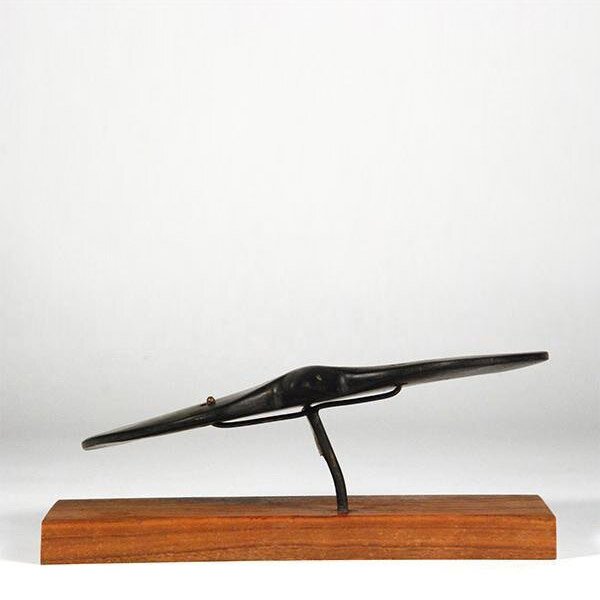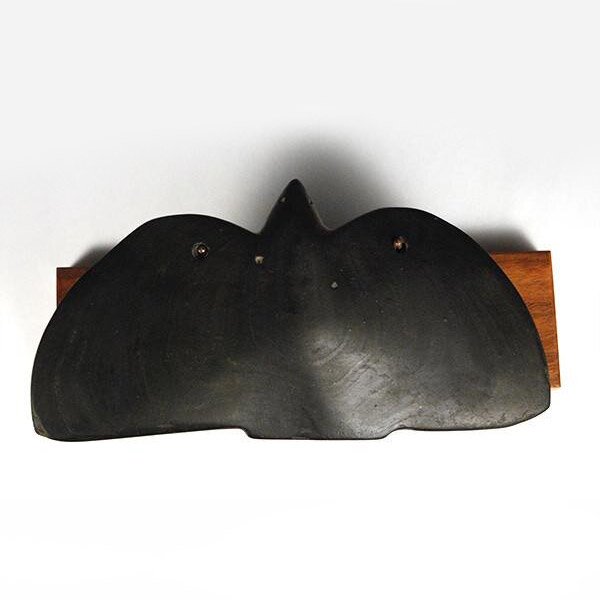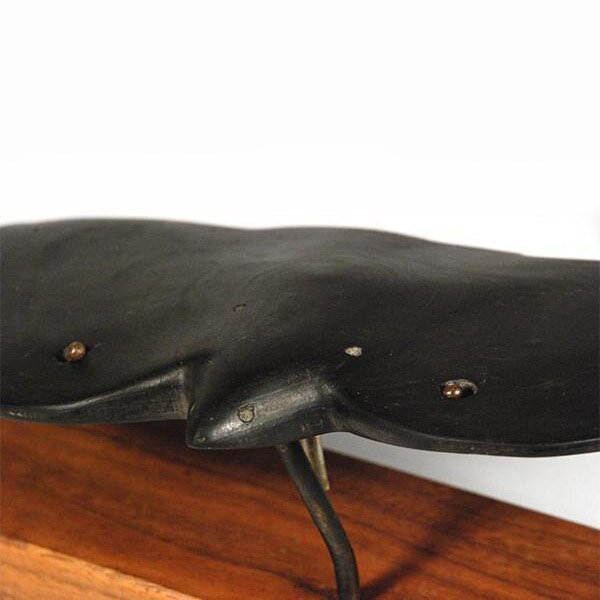Southern California Indian Stone Manta Ray
This stone steatite manta ray was carved by a Native American, likely Chumash, selling his art work to passing cars in the early days of the Pacific Coast Highway (PCH) the pioneering road linking sunny Southern California with the wild Northern coast.
In Indigenous culture the manta ray, the largest of the ray family with wing spans of up to 7 meters, and unlike others harmless to humans, was associated with strength, wisdom, and protection.
While made for sale, the artist’s original vision and proximity to native lore is clearly present. Highly collectible.
Circa 1930’s.
Length: 21.5 cm / 8 1/2 in
Width: 10.16 cm / 4 in
Ex. Proctor Stafford Collection, Los Angeles.
Ex. Anthropos Fine Arts, Malibu.
On a custom museum stand.
This stone steatite manta ray was carved by a Native American, likely Chumash, selling his art work to passing cars in the early days of the Pacific Coast Highway (PCH) the pioneering road linking sunny Southern California with the wild Northern coast.
In Indigenous culture the manta ray, the largest of the ray family with wing spans of up to 7 meters, and unlike others harmless to humans, was associated with strength, wisdom, and protection.
While made for sale, the artist’s original vision and proximity to native lore is clearly present. Highly collectible.
Circa 1930’s.
Length: 21.5 cm / 8 1/2 in
Width: 10.16 cm / 4 in
Ex. Proctor Stafford Collection, Los Angeles.
Ex. Anthropos Fine Arts, Malibu.
On a custom museum stand.
This stone steatite manta ray was carved by a Native American, likely Chumash, selling his art work to passing cars in the early days of the Pacific Coast Highway (PCH) the pioneering road linking sunny Southern California with the wild Northern coast.
In Indigenous culture the manta ray, the largest of the ray family with wing spans of up to 7 meters, and unlike others harmless to humans, was associated with strength, wisdom, and protection.
While made for sale, the artist’s original vision and proximity to native lore is clearly present. Highly collectible.
Circa 1930’s.
Length: 21.5 cm / 8 1/2 in
Width: 10.16 cm / 4 in
Ex. Proctor Stafford Collection, Los Angeles.
Ex. Anthropos Fine Arts, Malibu.
On a custom museum stand.






